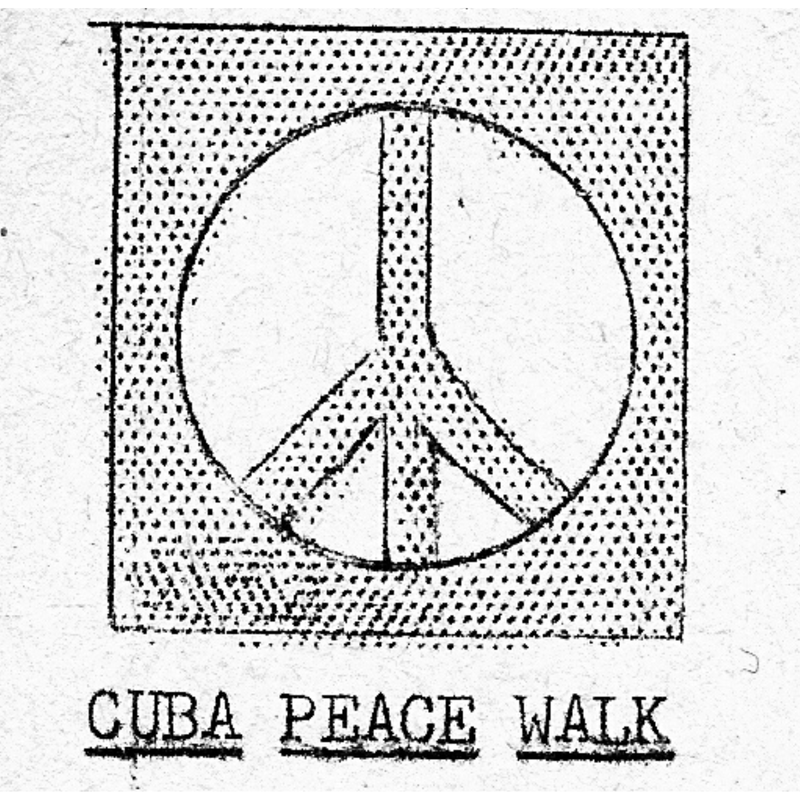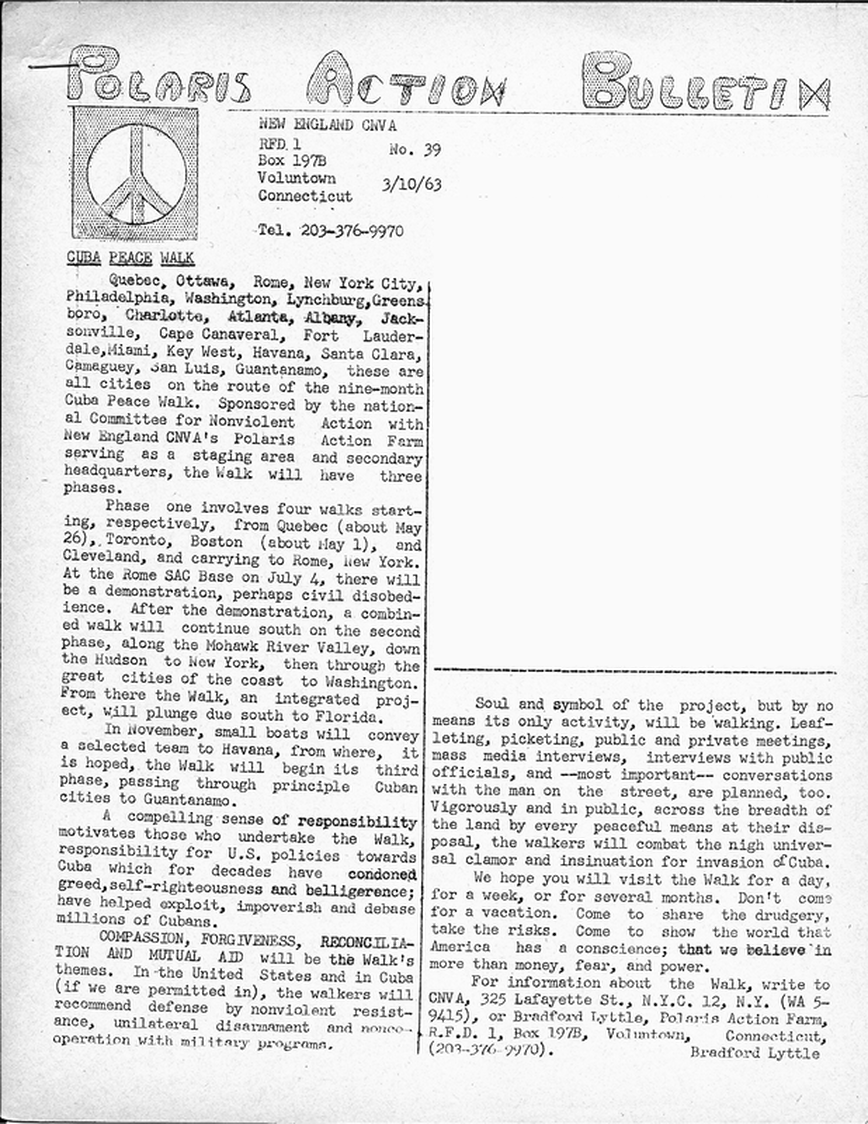|
In the summer of 1963, less than a year after the Cuban Missile Crisis and just two years after the failed US invasion of Cuba, the Committee for Nonviolent Action (CNVA) organized the Quebec-Washington-Guantanamo Walk for Peace, a months-long journey down the North American east coast, calling for “compassion, forgiveness, reconciliation and mutual aid” between the United States and Cuba. Peace activists started the walk as far north as Quebec City, converged in Rome, NY, and then walked all the way down to Key West. From there, they planned to take small boats to Cuba itself in order to walk across the great island with the same message. The project was not without its risks. Many of the participants had done similar walks in the recent past — the San Francisco to Moscow Walk for Peace had been completed in 1961, which inspired several shorter walks in the following years. So, many of the participants were prepared for the day-to-day difficulties of walking every day for months straight. Most were also accustomed to the occasional ridicule and hostility that arose in some places — part of the point of walking was to be able to stop and talk to locals at any time. Many had been arrested before and knew what to expect in jail. But on this walk, the activists would also have to contend with violent anti-communist Cuban immigrants as well as Jim Crow. Several activists were arrested in Albany, Georgia for challenging Jim Crow laws, as the walk was always planned to be racially integrated. For some participants, these experiences with such hatred illustrated just how these social justice issues are related to each other. Barbara Deming, New England CNVA member who was jailed at Albany, famously discussed this exact topic in her book Prison Notes. Indeed, several members of the New England CNVA at VPT (then called Polaris Action Farm) served as lead organizers of this project, and the Polaris Action Farm itself played an important role in the logistics. Intending to kick off at the end of May 1963, organizing efforts began several months earlier. In fact, the whole length of the walk actually started as three separate walks organized by regional groups — the New England CNVA’s newsletter Polaris Action Bulletin was promoting the walk to Rome, NY as far back as December 1962. But within the first couple of months of the new year, the regional groups had stitched the three routes together to form one of the biggest US peace actions of the early 1960s. On Monday, January 23, we will celebrate the 2nd anniversary of the international prohibition of nuclear weapons — an amazing international achievement that undoubtedly owes much to the efforts of those 1960s peace activists. To join us or to learn more, see the event page here: https://fb.me/e/2frWLbKeX Moreover, we at VPT are already starting to plan some summer events, including the arrival of the Golden Rule in New London, CT in July. Coincidentally, the Golden Rule just left Cuba a few days ago. As the world’s first modern protest ship and a vessel originally operated by the CNVA, the Golden Rule has strong historical ties to VPT. We at VPT will put on some public events related to the ship in the months before it arrives as well as when the ship is here. To stay in the loop about these events, sign up for our newsletter: http://eepurl.com/Oqf99 —
Support Us We commit a significant amount of research and writing to produce A Peace of History each week. If you like our weekly posts, please consider supporting this project with a one-time or recurring donation. Your gift will be used to continue producing more A Peace of History posts as well as the greater mission of VPT. You may type in however much you would like to give; contributions of all sizes are appreciated. Click this link to learn more about what we do and how you can donate: https://www.mightycause.com/organization/Voluntown-Peace-Trust — Source Lyttle, Bradford. “Cuba Peace Walk.” Polaris Action Bulletin. 3 March 1963 (Bulletin #39), page 1. Comments are closed.
|
AuthorWrite something about yourself. No need to be fancy, just an overview. Archives
March 2023
Categories |


 RSS Feed
RSS Feed